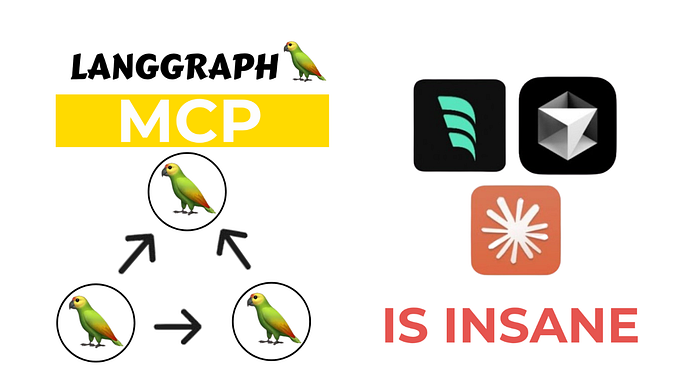Integrating AI and Machine Learning in Wearable Devices App Development for Smarter Solutions

In the past decade, wearable technology has gone from being a niche market to becoming a key part of everyday life. These devices, ranging from fitness trackers to smartwatches, are used by millions of people worldwide to track everything from steps and heart rate to sleep patterns and stress levels. With the integration of Artificial Intelligence (AI) and Machine Learning (ML), the potential of wearable devices has significantly expanded, allowing for smarter, more efficient, and more personalized solutions.
This article will explore the role of AI and ML in wearable devices app development and how these technologies are transforming the way we interact with and benefit from wearable technology. From personalized health monitoring to predictive analytics, AI and ML are paving the way for smarter solutions in a wide range of industries. We’ll also explore how businesses can leverage these advancements to create innovative wearable devices that offer users even more value and convenience.
The Rise of Wearable Devices and Their Role in Modern Life
Wearable devices have grown significantly in popularity in recent years. According to a report by Statista, the global wearable technology market size was valued at USD 61.3 billion in 2020 and is expected to expand at a compound annual growth rate (CAGR) of 18.1% from 2023 to 2030. This explosive growth is driven by increasing health awareness, the demand for fitness tracking, and the shift toward connected living.
These devices have traditionally been used for tracking basic health metrics such as steps, distance, and heart rate. However, today’s wearables are far more sophisticated, offering features that include sleep tracking, ECG monitoring, blood pressure measurement, stress management, and more. Smartwatches like the Apple Watch and Fitbit, as well as medical-grade devices, have become essential tools for both health-conscious individuals and those with chronic health conditions.
The addition of AI and Machine Learning (ML) is what truly sets modern wearable technology apart from the early versions. AI allows devices to analyze vast amounts of data quickly and make intelligent decisions in real-time. Machine learning, on the other hand, enables wearables to learn from user data and provide more personalized insights over time. Together, these technologies are transforming wearable devices into smart, autonomous systems that offer a deeper understanding of users’ health and wellness.
What is AI and Machine Learning?
Artificial Intelligence (AI) refers to the simulation of human intelligence by machines programmed to perform tasks that would normally require human cognition, such as reasoning, learning, problem-solving, and decision-making. In the context of wearable devices, AI is used to process large datasets and make intelligent recommendations, predictions, and decisions based on the data collected from the device’s sensors.
Machine Learning (ML), a subset of AI, involves algorithms that enable a system to improve automatically from experience. Rather than being explicitly programmed for every decision, machine learning allows wearables to learn from historical data and adjust their operations over time. This is particularly useful for developing more personalized solutions based on the unique needs of each individual.
For example, a wearable device may analyze a user’s sleep data and detect patterns that indicate poor sleep quality. Using machine learning, it may learn that specific actions, such as reducing caffeine intake or following a consistent bedtime routine, improve sleep quality for that particular user. Over time, the device can adapt and offer more refined suggestions for better sleep.
Benefits of Integrating AI and Machine Learning in Wearable Devices
1. Personalized Health Monitoring
AI and ML are at the heart of personalized health monitoring. Unlike traditional wearable devices that simply track basic metrics, AI-powered wearables can offer tailored insights and recommendations based on individual user data. This can include advice on exercise routines, stress management, sleep improvement, and even diet.
For example, a fitness tracker can monitor a person’s physical activity and suggest adjustments to improve workout efficiency. If the system detects that a user is not reaching their target step count or has been sedentary for an extended period, it can send notifications prompting the user to move or adjust their activity level. The system learns from the user’s behavior and provides tailored recommendations for optimal health.
2. Predictive Health Analytics
One of the most powerful aspects of AI and ML in wearable devices is the ability to predict health outcomes before they happen. By analyzing historical data and real-time inputs, AI can recognize patterns and anomalies that may signal potential health issues.
For example, a wearable device can monitor the heart rate and ECG of a user and alert them when it detects irregularities that could indicate the onset of a heart condition like arrhythmia. In some cases, the wearable can even recommend that the user consult with a healthcare professional based on predictive analytics. This type of predictive monitoring can greatly enhance preventative care and help users make informed decisions about their health before issues escalate.
3. Smarter Fitness and Wellness Solutions
AI and ML-powered wearables take fitness tracking to the next level. These devices not only monitor exercise routines but also offer dynamic, personalized fitness plans. For instance, a fitness app can analyze data from a smartwatch to track physical activity, caloric intake, and even sleep patterns. Over time, it can generate a fitness regimen based on the user’s progress, preferences, and fitness goals. The result is a more adaptive and responsive fitness experience.
Wearable devices can also help users optimize their wellness routines by tracking stress levels, monitoring breathing patterns, and suggesting exercises like yoga or mindfulness when stress levels rise. The incorporation of AI enables wearables to learn from the user’s behavior, ensuring that the recommendations are always relevant and timely.
4. Improved Data Accuracy and Real-Time Feedback
Wearable devices collect vast amounts of data on a daily basis. The integration of AI and ML ensures that this data is processed accurately and efficiently. These algorithms can reduce the margin for error and help provide precise readings from sensors, even when external factors such as environmental conditions could affect the data.
For example, if a heart rate monitor detects irregularities in a user’s pulse, the AI system can cross-check the data with other variables (such as motion or body temperature) to ensure that the reading is accurate. The device can then provide real-time feedback and suggest actions based on the most accurate data possible.
5. Real-Time Health Alerts
AI-powered wearables can send real-time alerts to both users and healthcare providers, ensuring prompt action in the case of abnormal readings. If a wearable detects any alarming trends or deviations in health data — such as a dangerously high heart rate or low blood oxygen levels — it can send an alert to the user’s smartphone, prompting them to take action immediately.
In critical situations, such as a heart attack or stroke, wearables equipped with AI can notify emergency services and provide essential health information, potentially saving lives.
Key Applications of AI and Machine Learning in Wearable Devices
1. Fitness and Activity Tracking
AI and ML are revolutionizing the fitness industry by enabling more personalized fitness plans and real-time tracking. These devices not only track steps and calories burned but also analyze data to recommend optimal exercise routines tailored to individual goals and fitness levels. The combination of AI with sensors in wearables ensures accurate data capture, enabling better insights into workout performance.
2. Healthcare Monitoring
The integration of AI and ML in wearable healthcare devices has immense potential for improving chronic disease management. From diabetes monitoring to heart disease prevention, wearable devices can track vital health metrics like blood sugar, ECG, and blood pressure. These devices not only help users manage their conditions more effectively but also allow for better early detection and intervention of health problems.
For instance, continuous glucose monitoring systems can use AI to predict blood sugar fluctuations and notify users about necessary actions to keep their levels under control, reducing the risk of complications for diabetics.
3. Sleep and Stress Management
Sleep and stress are key components of overall health, and wearables equipped with AI can significantly improve the management of these factors. Machine learning algorithms track sleep patterns and provide insights into sleep quality, such as the duration of deep sleep and periods of restlessness. Based on this data, AI can suggest changes to the user’s routine to optimize their sleep patterns.
Similarly, wearables can monitor heart rate variability (HRV), which is a key indicator of stress levels. By learning the user’s baseline HRV and detecting changes, AI-powered wearables can suggest stress-relief techniques such as deep breathing exercises, mindfulness, or guided meditation.
4. Mental Health and Well-being
Wearable devices are also playing a growing role in mental health monitoring. AI algorithms can detect patterns that indicate heightened stress, anxiety, or depression. For example, a smartwatch with AI can monitor a user’s heart rate and skin temperature, which may fluctuate during stress or anxiety attacks. Once detected, the wearable can provide suggestions to alleviate the symptoms, such as deep breathing exercises or prompts to take a walk.
Challenges of Integrating AI and ML in Wearable Devices
While AI and ML are transforming wearable technology, challenges remain in their widespread adoption. Some of the key challenges include:
- Data Privacy and Security: Wearable devices collect sensitive health data, and ensuring this data is secure is paramount. AI and ML algorithms require large datasets, but these datasets must be protected from cyber threats and unauthorized access.
- Battery Life: AI and ML models are often computationally intensive, which can impact the battery life of wearable devices. Striking a balance between offering advanced features and maintaining long battery life is a challenge for developers.
- Accuracy of Sensor Data: While AI and ML improve the interpretation of data, the accuracy of the sensors themselves can still pose a challenge. Inaccurate readings can lead to incorrect recommendations or conclusions.
- User Adoption and Accessibility: Although wearables are increasingly popular, convincing users to adopt these advanced technologies may require overcoming barriers such as ease of use, affordability, and user education.
The Future of AI and ML in Wearable Devices
The future of wearable devices is inextricably linked to advancements in AI and ML. As AI algorithms improve and machine learning models become more sophisticated, wearable devices will continue to evolve. We can expect greater personalization, increased accuracy, and deeper insights into health and well-being. The future of wearable devices will likely involve more integration with other technologies, such as 5G for faster data transmission and edge computing for real-time analytics.
Conclusion
AI and machine learning are transforming wearable devices from simple activity trackers into sophisticated, intelligent systems capable of providing personalized, real-time health insights. From fitness and wellness tracking to predictive health analytics and mental health monitoring, AI-powered wearables offer a wealth of benefits for users.
As wearable device app development continues to evolve, businesses have an opportunity to create innovative, AI-driven solutions that improve health outcomes, enhance user experience, and contribute to a more connected and healthier world. The integration of AI and machine learning in wearables is just the beginning of a new era in personal technology.









